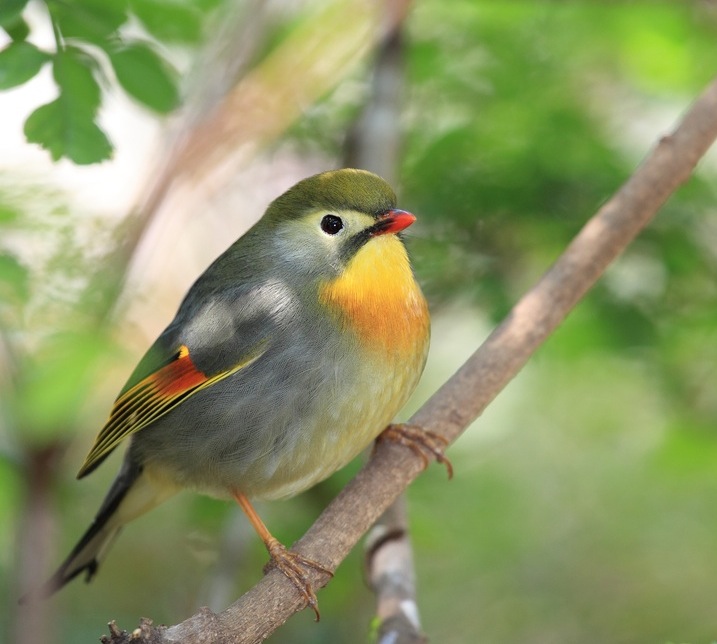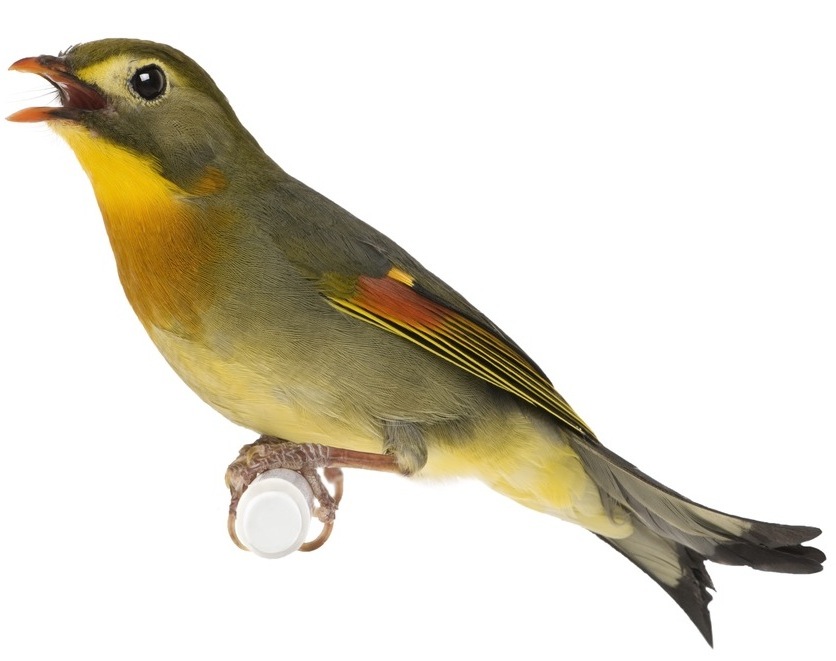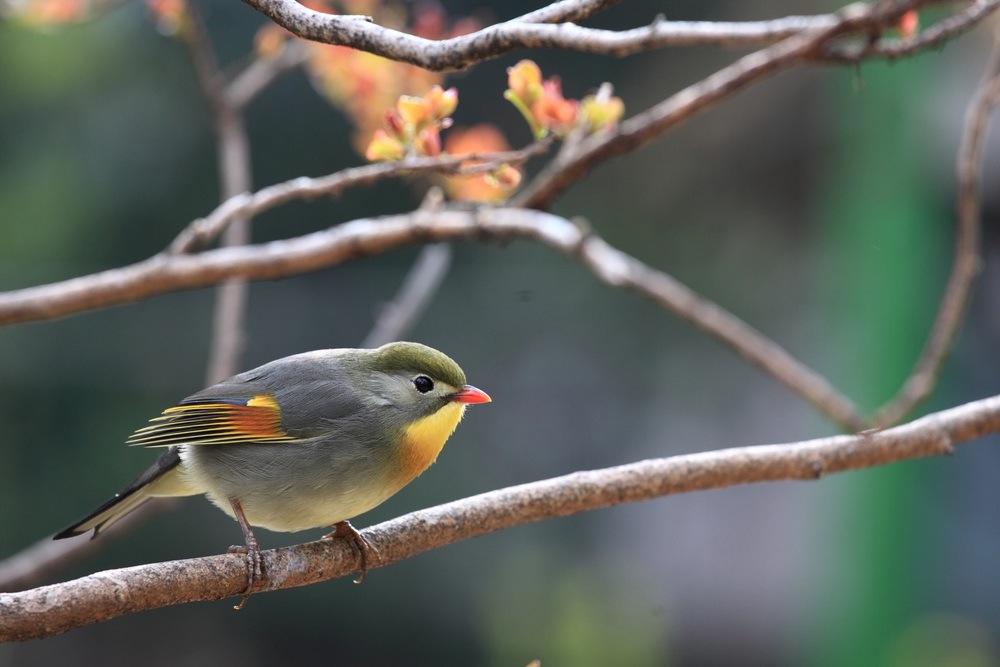Pekin Robin - Leiothrix lutea

Origins: Extends from the Himalayan region eastwards to China.
Length: 15cm (6in).
Appearance: Olive head, becoming greyer over the back and wings. Bright yellow and reddish-orange markings visible in the wings, even when closed. There is also an area of yellow plumage under the chin, which can be variable in depth and extent - sometimes taken as a guide for sexing purposes, but not generally reliable for this purpose. It becomes orangish just before it merges into the olive-grey feathering of the underparts. Bill is bright red.
Similar species: Silver-eared mesia (L. argentauris) is more colourful overall, with a black head, silver ear coverts and bright red upper tail coverts, with reddish wings but a yellow bill. Needs similar care.

Noise rating: Cock birds have an attractive song, which also provides a means of distinguishing the sexes when they are in breeding condition.
Suitability: A good introduction to keeping softbills, being easy to care for, and offering a reasonable opportunity for breeding success. Best-kept in aviary surroundings, where the inquisitive, friendly nature of these birds can be fully appreciated.
Care: Will thrive over the warmer months of the year in a planted outdoor aviary, and are relatively hardy once acclimatised. Even so, Pekin robins must have snug winter quarters in temperate areas, with heating available on cold days. Feeding is straightforward - provide a good mixture of diced fruit, such as apple and grapes, mixed with a quality softbill food or pellets. This needs to be prepared fresh every day. In a communal aviary alongside finches, Pekin robins will even eat smaller seeds like millet and plain canary seed. Some livefood such as waxworms should be offered, particularly during the breeding period, and greenfood such as chickweed, if this is eaten. Also, provide a shallow trough of fresh water for bathing purposes.
Caution: Pekin robins have a reputation as egg-stealers, when sharing accommodation with other birds such as small finches, although not all pairs behave in this fashion.

The cock’s song is the most reliable indicator, apart from DNA sexing. Pairs become very devoted to each other as the time for nesting approaches. They may build a cup-shaped nest in suitable vegetation, or can be persuaded to use a nest box lined with material for this purpose. Egg food plus increased supplies of soft-bodied livefood are important once there are chicks in the nest.
Breeding data: Three to four eggs. Incubation and fledging periods both last approximately 14 days.
Potential lifespan: 8-10 years.